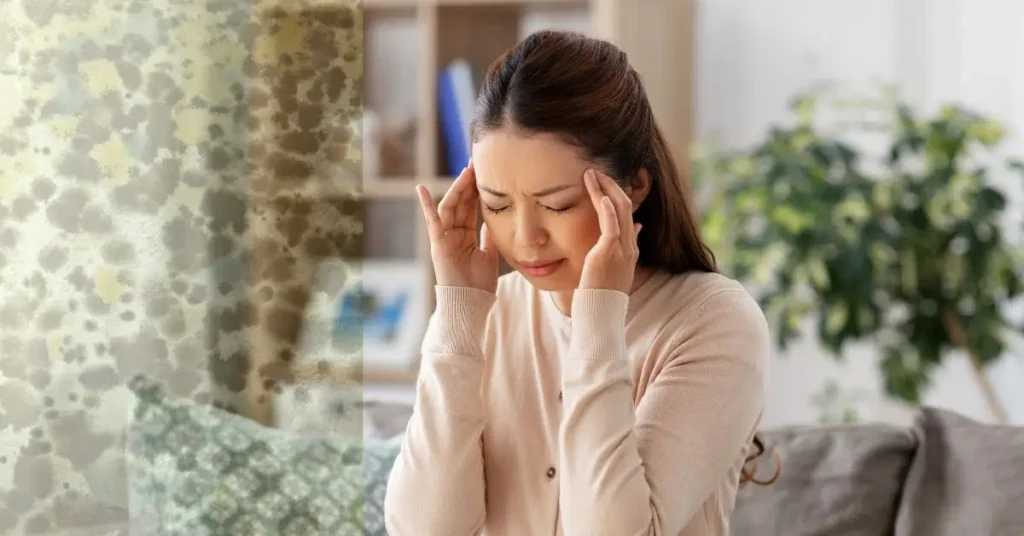Mold toxicity is a serious health concern that can affect individuals exposed to elevated levels of mold and mycotoxins. Mold spores, such as Aspergillus, Penicillium, and Stachybotrys chartarum, can multiply rapidly indoors, leading to the development of colonies on various surfaces. Mold toxicity occurs when individuals are exposed to high levels of mold and its byproducts, known as mycotoxins. Mycotoxins can have detrimental effects on human health when inhaled, ingested, or come into contact with the skin.
Several factors contribute to mold toxicity, including water damage, poor ventilation, high humidity, and lack of sunlight. Common symptoms include respiratory issues, fatigue, headaches, joint pain, cognitive impairment, and skin irritation.
To mitigate mold toxicity, individuals should control moisture, regularly clean and maintain living and working spaces, use dehumidifiers in high humidity areas, allow natural sunlight into living spaces, ensure proper ventilation systems, and hire professionals for a thorough inspection. Recognizing the signs and taking proactive steps to prevent and address mold growth is crucial for maintaining a healthy living and working environment.
Understanding Mold and Its Pervasiveness
Mold is a type of fungus that thrives in damp, humid environments. It plays a crucial role in breaking down organic matter and returning nutrients to the ecosystem. However, when mold spores find their way indoors and encounter favorable conditions, they can multiply rapidly, leading to the development of colonies on various surfaces.
Common indoor molds include Aspergillus, Penicillium, and Stachybotrys chartarum (commonly known as black mold). Mold spores are tiny and lightweight, allowing them to become airborne easily. This airborne nature is one reason mold can infiltrate various areas of a building, potentially causing health issues.
Causes of Mold Toxicity
Mold toxicity occurs when individuals are exposed to high levels of mold and its byproducts, known as mycotoxins. Mycotoxins are toxic substances produced by certain molds as they grow. While molds themselves may not always be harmful, mycotoxins can have detrimental effects on human health when inhaled, ingested, or come into contact with the skin.
Several factors contribute to the development of mold toxicity
Water Damage: Mold thrives in damp environments, and water damage in buildings is a common precursor to mold growth. Leaky roofs, plumbing issues, or flooding can create ideal conditions for mold to flourish.
Poor Ventilation: Inadequate ventilation allows moisture to accumulate, creating an environment conducive to mold growth. Poorly ventilated spaces, especially in bathrooms, basements, and kitchens, are at a higher risk.
High Humidity: Areas with consistently high humidity levels provide an inviting atmosphere for mold. Humidity levels above 60% can contribute to mold proliferation.
Lack of Sunlight: Mold prefers dark environments. Spaces with limited exposure to sunlight may facilitate mold growth.
Symptoms of Mold Toxicity
Mold toxicity can manifest with a wide range of symptoms, making it challenging to diagnose. The symptoms often mimic those of other health conditions, leading to potential misdiagnoses. Common symptoms include:
Respiratory Issues: Persistent coughing, wheezing, and difficulty breathing are common respiratory symptoms associated with mold toxicity.
Fatigue: Individuals exposed to mold may experience unexplained fatigue and weakness.
Headaches: Recurrent headaches or migraines can be indicative of mold toxicity.
Joint Pain: Mold toxicity has been linked to joint pain and muscle aches.
Cognitive Impairment: Difficulty concentrating, memory issues, and brain fog are reported by some individuals exposed to mold.
Skin Irritation: Skin rashes, itching, and irritation can occur upon contact with mold or mycotoxins.
Mitigating Mold Exposure
Preventing mold toxicity involves addressing the underlying causes of mold growth and taking proactive measures to minimize exposure. Here are some strategies to mitigate mold risks:
Control Moisture: Address any water leaks or damage promptly. Proper ventilation in bathrooms, kitchens, and basements can help reduce humidity levels.
Regular Cleaning: Regularly clean and maintain your living and working spaces. Pay attention to areas prone to moisture, such as bathrooms and kitchens.
Use Dehumidifiers: In areas with high humidity, using dehumidifiers can help maintain optimal moisture levels and inhibit mold growth.
Sunlight Exposure: Allow natural sunlight into your living spaces. Sunlight is a natural mold inhibitor and can help keep mold at bay.
Proper Ventilation Systems: Ensure that ventilation systems in your home or workplace are functioning efficiently. Proper airflow can prevent the buildup of moisture.
Professional Inspection: If you suspect mold in your environment, consider hiring professionals for a thorough inspection. They can identify hidden mold sources and recommend appropriate remediation measures.
Conclusion
Mold toxicity is a serious health concern that can impact individuals exposed to elevated levels of mold and mycotoxins. Recognizing the signs and taking proactive steps to prevent and address mold growth is crucial for maintaining a healthy living and working environment. By understanding the causes, symptoms, and mitigation strategies associated with mold toxicity, individuals can make informed decisions to protect themselves and their loved ones from the hidden dangers of mold exposure.







